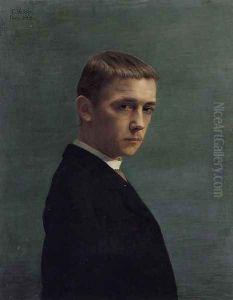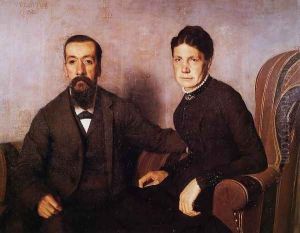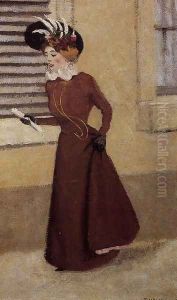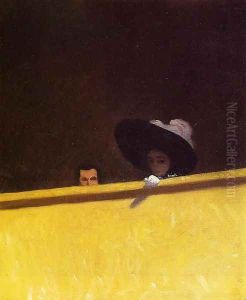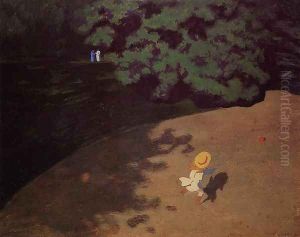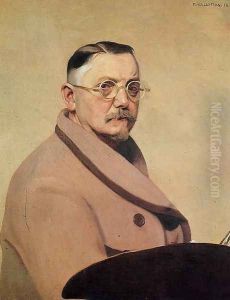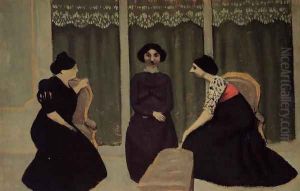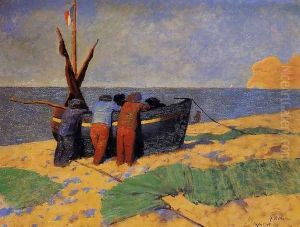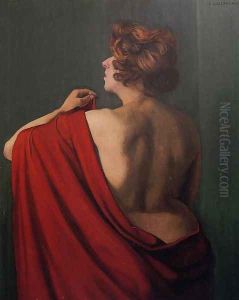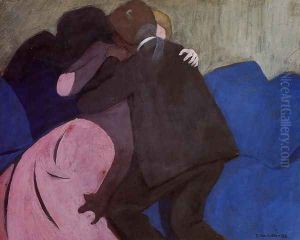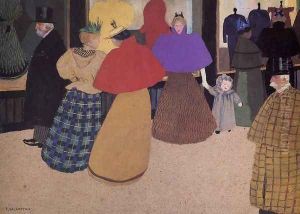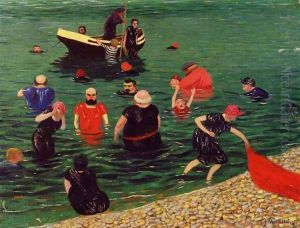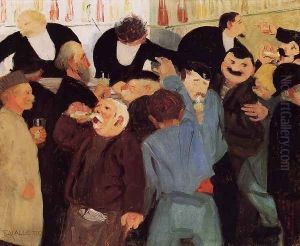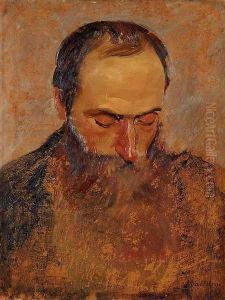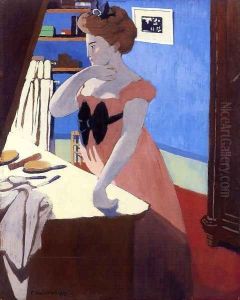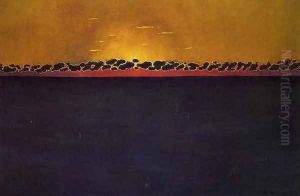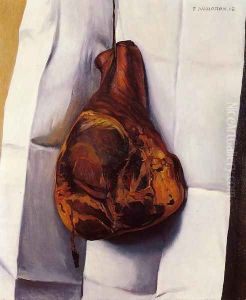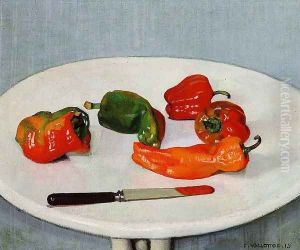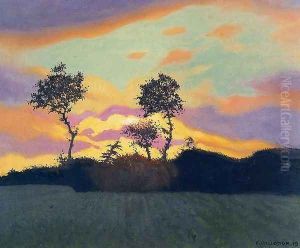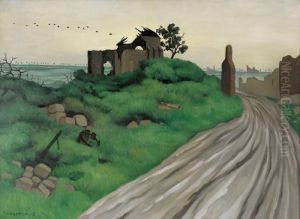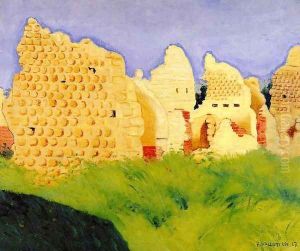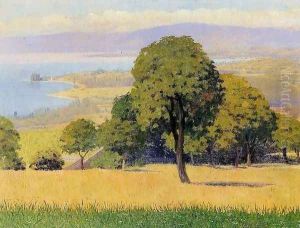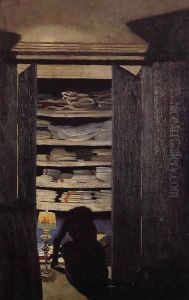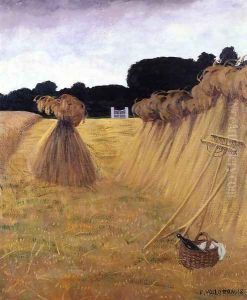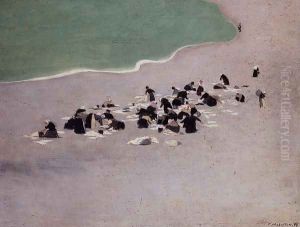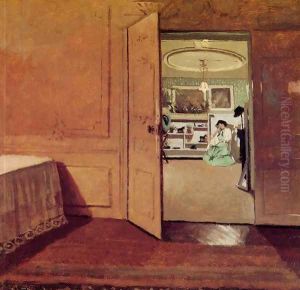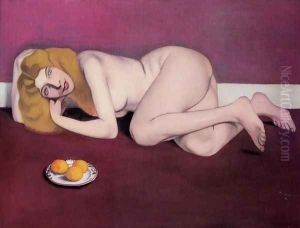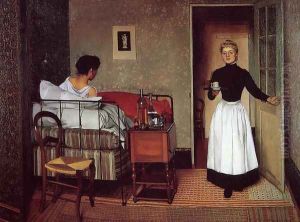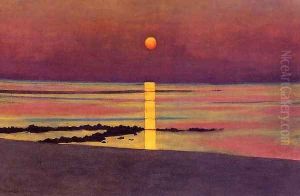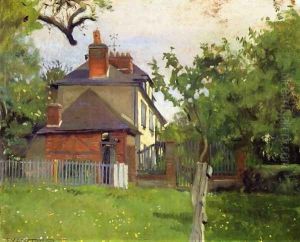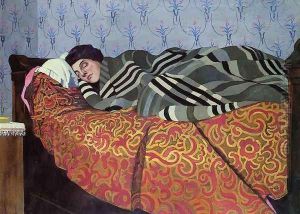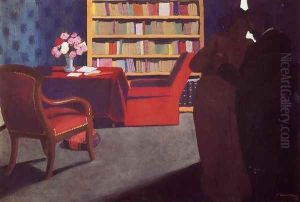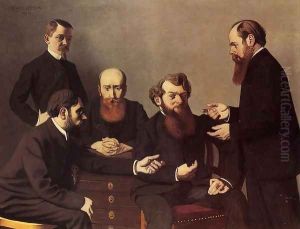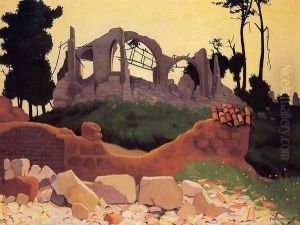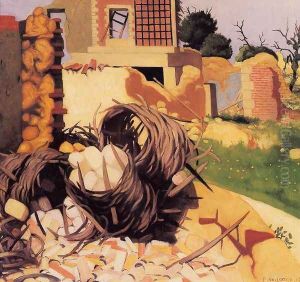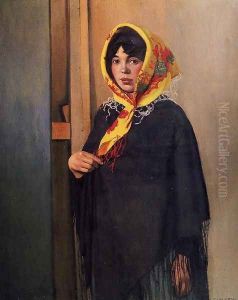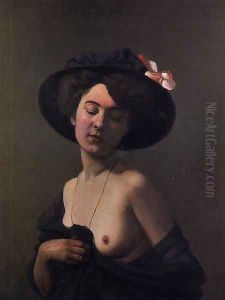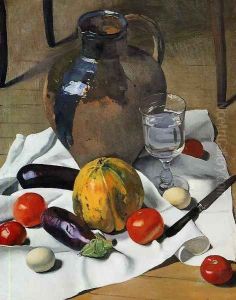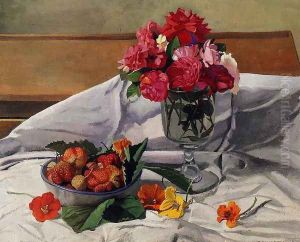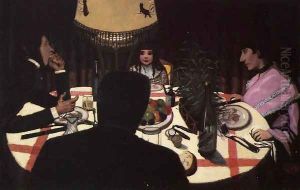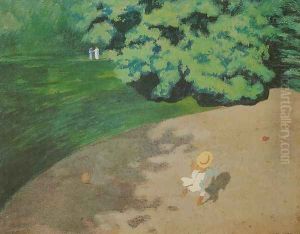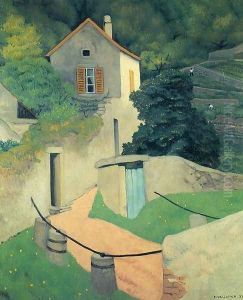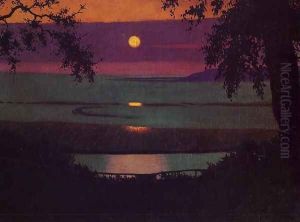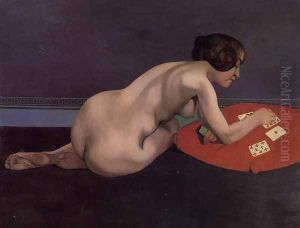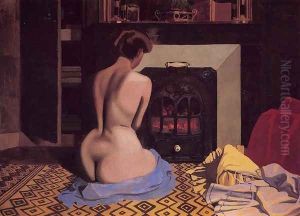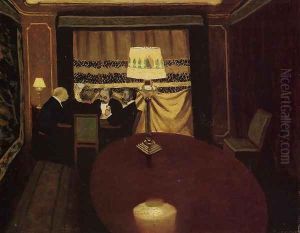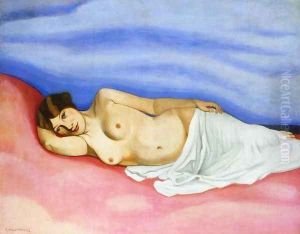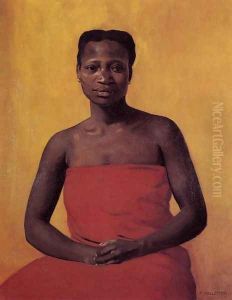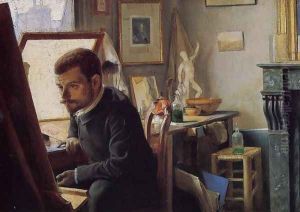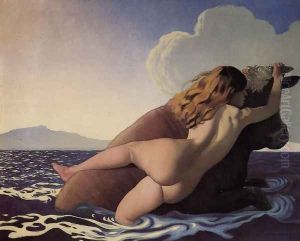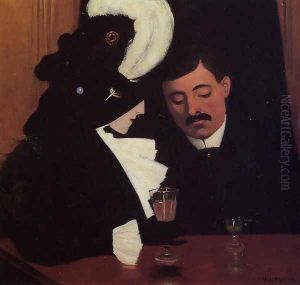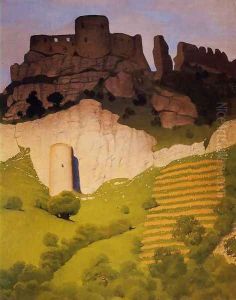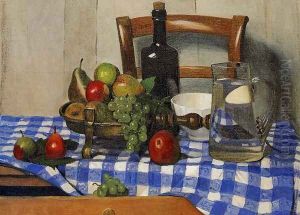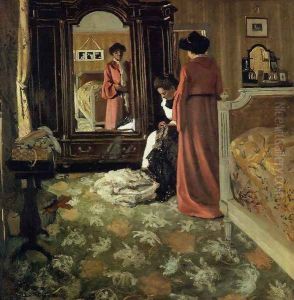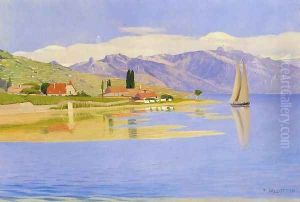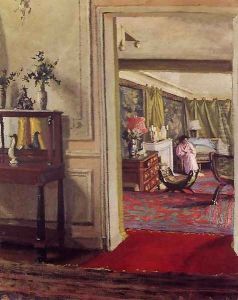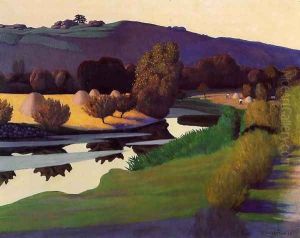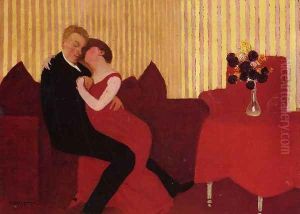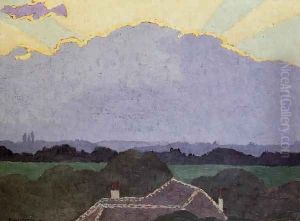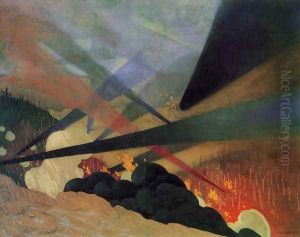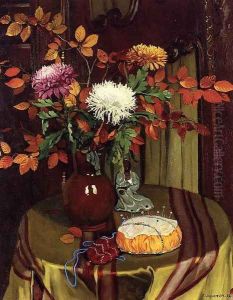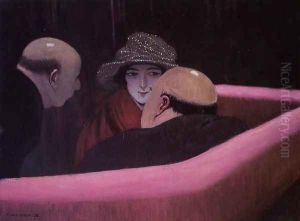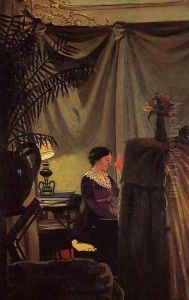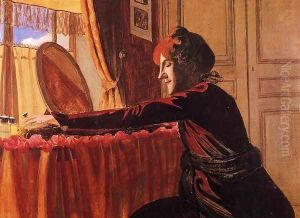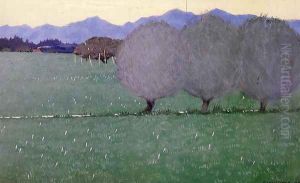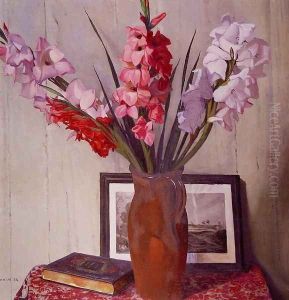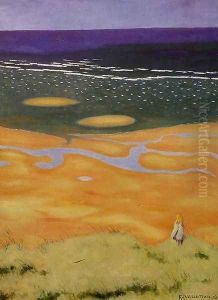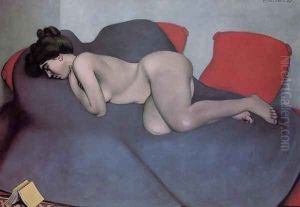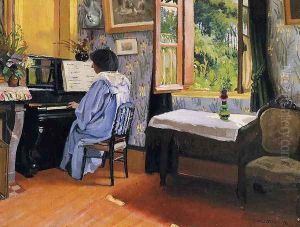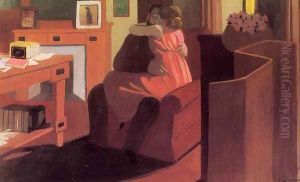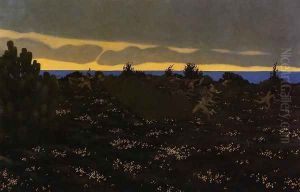Felix Edouard Vallotton Paintings
Félix Édouard Vallotton was a Swiss/French painter and printmaker associated with the collective known as Les Nabis. Born on December 28, 1865, in Lausanne, Switzerland, Vallotton showed a keen interest in art from a young age. He moved to Paris at the age of sixteen to study art and became involved with the Nabis in the early 1890s, a group of artists who were influenced by the Symbolist movement and aimed to break away from the traditional approaches of painting.
Vallotton's early works were mainly portraits and landscapes, but his style began to change after he joined Les Nabis. He became best known for his starkly reductive woodcuts, which were characterized by their bold lines and flat areas of color. These woodcuts often depicted scenes of Parisian life with a satirical and sometimes dark edge. Alongside his graphic works, Vallotton also painted a number of interiors, still lifes, and nudes with smooth surfaces and an almost photographic realism.
In addition to visual arts, Vallotton was also an accomplished writer, contributing art criticism and novels to various publications. His writings helped to articulate the theories and ideas behind the Nabis' work.
Despite being a central figure within the Nabis, Vallotton's work often stood apart due to its unique style and the often cynical tone of his subject matter. After the turn of the century, his work shifted again, reflecting an interest in classical subjects and a more naturalistic approach to painting. His later works include a series of ten paintings titled 'The Ten Commandments' in 1907, which reflected his personal engagement with moral and social issues.
Vallotton's relationship with the public and critics was complex during his career. While he had his supporters, he also faced criticism for the perceived coldness and mechanical quality of his technique. However, his work gained significant recognition after his death, influencing the development of the modern woodcut.
He married Gabrielle Rodrigues-Henriques, a wealthy widow, which brought him financial security and allowed him to focus on his art without the pressure of sales. Vallotton died on December 29, 1925, in Paris, and left behind a diverse and provocative body of work that continues to be studied and appreciated for its innovation and commentary on modern life.

